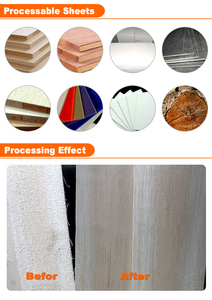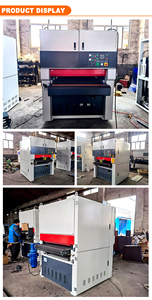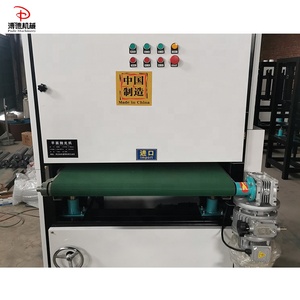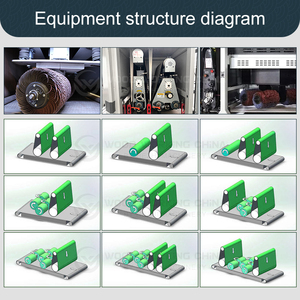(1114 products available)






















































































































































































































Water sander machines are utilized in various applications like furniture making, floorboard installation, and decking construction. The designs of this sander machine can be distinguished into portable and stationary types.
Portable water sander machines
Portable sanders allow users to perform sanding tasks on various surfaces at different angles and positions. There are two common designs, including hand water sanders and wet/dry vacuum water sanders. Hand water sanders usually come with a wood block to hold and are used with a rubber block and foam pad to follow the contours of a workpiece. It is common to see them used in countertop production. While hand sanders are often held and moved, some types have wheels to roll, making it easier to sand in a kneeling position. A floor water sander is an example of a hand sander with wheels. Unlike hand sanders, floor sanders have a handle that can be pushed or pulled from behind to guide the sander as it moves. They also have larger belt sizes to cover more ground and work faster than hand sanders.
Wet/dry vacuum water sanders combine the features of hand sanders and dust extraction systems. They typically come with a vacuum hose, which allows for better visibility and a cleaner workspace by eliminating dust.
Stationary water sander machines
These machines are used for sanding wooden materials to any desired shape or size. They usually feature a flat base and a round disc connected to a spindle that is polished with a secondary motor to achieve a specific desired speed. Bench sander machines are a type of stationary sander that can be used on various workbenches and has an adjustable platform to sand at different angles. Band sanders, on the other hand, use belts to sand and provide more efficient and precise sanding than disc ones. However, they are less common and mostly used in factories because they have higher capacity requirements than hand and disc sanders.
Like any other industrial tool and equipment, proper maintenance of the water sanding machine for wood is critical. Regular machine care improves performance and longevity while reducing repair costs. Here are some useful maintenance tips:
Water sanding machines are increasingly finding applications in various industries. Here are some scenarios of their sanding applications:
Woodworking industry uses water sander machines:
In the woodworking industry, the use of water in the sander machine has become popular. It has become a preferred method of finishing furniture and cabinets. The equipment provides a method that suppresses dust and improves the surface quality of wood products. Water cutting boards, as an example, benefits from the tool, creating smoother surfaces while limiting injuries to workers to a great extent.
Automotive repair and restoration projects:
Water sanders machine also finds application in automotive repair and restoration projects. It comes in handy when body shops or automotive enthusiasts are looking to restore classic cars. During such a process, the machines will be used to achieve a high-gloss finish on vehicle panels.
Using the tool suppresses dust and minimizes the risk of overheating vital engine components.
Marine industry: boat and yacht refinishing;
The marine industry calls for constant maintenance of boats and yachts. It extensively uses the water sanding machine to refinish the hulls and decks of the boats. There are minimal risks of clogging the sanding pads, which is an advantage of this wet method.
Before making the final purchasing decisions on wet sanding machines, there are several key parameters and features that people need to know. These could influence their ultimate choices on the types of machines they want to buy.
Q1: Which types of materials can a water sander machine help?
A1: Building materials such as gypsum board, wood, marble, and other material sanding work.
Q2: What is the difference between dry and water sanding?
A2: In dry sanding, dust particles fly around the working area, making it dangerous for the operator. Wet sanding controls dust by adding water to the process, making it safer and more breathable.
Q3: Can a water sander machine be used with any type of sanding paper?
A3: No, when carrying the water sander task, it is essential to use water-resistant sanding paper.